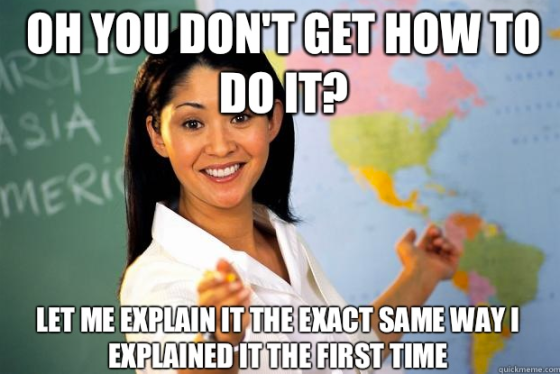The 'Consolidation of Responsibility' was the tip of an iceberg (Why adult mathematics classes fail)
Early research with adults in mathematics classes revealed a phenomenon called 'the consolidation of responsibility' (Howard & Baird, 2000; Karp & Yoels, 1976). This is when the members of the class cede personal agency to a few members of the class that they believe are more capable. Thus, a small number of the class members account for the majority of interactions between the class and the tutor, while the others remain silent. If you are a tutor, you will be aware that you will have a learner or two in your class that you end up addressing more than others. It's bad, because we learn by engaging in discussions, not just listening to others. The problem is adult learners letting others take the responsibility for asking questions - however that is the very tip of a nasty iceberg.
My research elaborates on the previous research by allowing us into the private world of learners. This was achieved through the use of microphones that recorded all utterances, at all times. I am able to recreate every moment of a lesson from various perspectives. Imagine taking a 3D video of a class which you can freeze, fast-forward or rewind while being able to move around in any direction. You could take the perspective of any one learner for the whole class, a group, or the tutor. I can do this in an audio sense, and thus fidelity is high. The results are fascinating.
I have been busy putting some theory around this using a symbolic interactionist (SI) framework. A key tenet of SI is that people are constantly interpreting others. They then modify their behaviours in order to achieve some need, usually a smooth interaction or collaboration, often in order to verify their identity in some way. In short, people read others and adapt. We 'read' others based on our beliefs about what their interactions and behaviours mean. Our subsequent adaptions are then 'read' by the others, changing the way they act - and on it goes! If this becomes maladaptive it can create interactions that are negative, which in a classroom will erode learning. This is particularly true for mathematics learning where we know that a particular pattern of behaviour results in learning and another does not.
It looks a bit like this within a typical vocational embedded numeracy class. Group members assign status to members they believe have a high proficiency in mathematics. They then take somewhat passive or supportive roles and acquiesce to these learners. The learner with higher status is more able to assert their expectations for normative behaviour on the group. These behaviours are not consistent with effective learning behaviours - in fact they are completely negative. The pattern of behaviour however, reproduces the conditions that produced status, and perpetuates a cycle of high/low proficiency members.
In other words - this pattern
perpetuates the failures many learners experienced in school.
In conclusion, the research on the consolidation of responsibility ought to have attracted more attention from the adult mathematics community. It was the top of a very nasty iceberg that potentially negates all the learning potential in an adult class.






